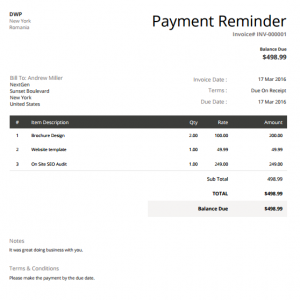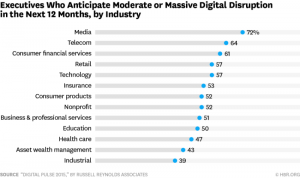Looking to upgrade your martech stack to make the most of your marketing capabilities? Columnist Jose Cebrian has some tips to ensure a smooth transition.

The revolution in customer relationship marketing (CRM) continues with an exponential increase in the points of data available to leverage for marketing. Data is more robust, measurement tools are better, and channel capabilities are improving — not only on their own, but also in their ability to orchestrate marketing across channels. All of this is great for the industry, and it is driving investment in new marketing stacks.
When I talk about a marketing stack here, I don’t mean that a company is buying everything from a single martech software provider. What I mean is that companies are updating what tools they have available to them — sometimes all at once, sometimes in pieces. Lately, I have been seeing more “all-new” stacks being architected, often with a main marketing cloud at the center but supported by best-of-breed campaign management platforms, analytics and BI tools, data hygiene tools and content management systems.
What I also observe is that each toolset usually has its own team of specialists who utilize and manage the tools. That makes sense; specialists know the tools well. But I often find that specialists who have a thorough knowledge of their own tools don’t always understand how to use complementary tools. Or the specialist doesn’t really understand the use case. The result is often a tech stack that either doesn’t meet the needs originally stated, or those needs are met, but on a much longer timeline.
In addition to the obvious point about paying for (and getting) good people to work on your project, who understand what you are trying to accomplish, I have identified a few key components of a successful CRM martech stack upgrade project.
Ensure you have an overall program manager
Oftentimes, these projects have several moving parts: vendors, channels, migrations, approvals, user acceptance testing (UAT), new licenses, contract wind-downs/extensions and so on. A person or group of people needs to be responsible for tracking the whole thing, keeping the component parts on schedule and summarizing blockers to be cleared.
In my experience, these people need to be dedicated to the project fully, so focus and responsibility are clear. It is feasible that each partner can do its job on time for an individual stakeholder with specific needs, but the project still fails because it is not managed as a whole.
Plan appropriately for socialization and governance activities
Depending upon the scale of the work or the likely organizational impact of this project, you need to secure leadership and stakeholder buy-in and communicate progress regularly. In many industries (pharma, media, CPG, financial services, insurance), we see centralization of a company’s data assets and marketing operations capabilities. This centralization impacts the operating model, data ownership, costs, data structure, reporting and more.
Stakeholders often need education on the value of the project, timing, cost/benefit to them personally and how they are expected to work in and around the project. As the project progresses, they need to be consulted regarding key decisions about policies around contact governance, data use and ownership.
Further, they will need ongoing training. Initially, this training should focus on what has been/is being built, but as the capabilities increase, training will be needed on those new capabilities. Additionally, they will need to understand what other parts of the organization have learned so that collectively, the company can be quicker to market.
Pay attention to the system connections
Connections between capabilities in different technologies or in the same “marketing cloud” vary in flexibility, speed and completeness. Connections I am talking about include:
- customer data integration (CDI) and master data management (MDM) to marketing database, marketing cloud, or campaign management platform.
- database or campaign management platform to marketing cloud and vice versa.
- site to marketing database or campaign management platform.
- marketing cloud to content management system (CMS) or digital asset management system for efficiency in campaign production and brand compliance.
- personally identifiable information (PII) data to data management platform (DMP).
- web analytics across marketing cloud and site to database for measurement and analytics.
“We have application programming interfaces (APIs)” is not an acceptable answer. You need to be clear on the use cases you want to enable and have a plan to get there. Key areas you want to investigate include:
- data latency — how quickly will the data be actionable, from a marketing perspective? For example, if you want a real-time email, but the architecture has daily loads, you need to consider alternatives.
- CMS to marketing cloud — how are you going to be able to leverage the assets you already have to speed marketing campaign execution and increase personalization? Do you have a plan? Is it ready for email or other high-load situations?
- Can you monitor the connection and measure its performance, so you can understand if you have room for improvement?
- channel execution to measurement — do you know what you want to measure? Are the definitions clear? Do you have operating procedures to ensure naming and tagging are clear?
Lastly, is there key functionality you are giving up that you want? Just because you are updating your technology doesn’t mean the former tech didn’t work or have some bright spots.
There may be functionality you care about that you are giving up. Investigate your must-haves, and make good choices about what customization you may need to support the old way of doing things.
Hire people who can use the new tech
There are multiple operating models — self-service, hybrid, full-service — to operate these stacks. How you choose your model is up to you, but what is clear to me is the following:
- If the people operating the platform are different from those who implemented it, then you need to bring the operators in before the implementation is complete. They will need to inject their own knowledge into the process. They may have their own specific requirements, and they should be involved with UAT, so there is some ownership of the final deliverable. You want to avoid the “this is the way we got it” excuse as much as possible.
- Staff a mix of doers and thinkers. Obviously, you need people to execute, and the output is clear. However, it is important to ensure enough budget for thinkers to plan how the solution and capability will evolve, educate the organization on lessons learned and socialize those new capabilities as toolsets improve and become more connected. Without these people, your capability will go unrealized.
As data, analytics and technology continue to grow in scale and capability, it’s critical that your organization keeps pace with the leading edge of people-based marketing skill sets.
Ensure that your marketing strategy is championed by a leader who understands the overall plan, the tactics and the nuances of your program. Organize the team around a single set of goals, and keep them informed along the way — not only about new capabilities and refreshes, but also about the ongoing progress of the program. Take necessary steps to facilitate connections among all the disparate systems in play to boost effectiveness and efficiencies.
Finally, always make sure your staff consists of a good mix of seasoned experience and leading-edge talent, with a cross-section of doers and thinkers. The variety of viewpoints and expertise will serve you well in executing on a people-based marketing strategy.
Opinions expressed in this article are those of the guest author and not necessarily Marketing Land. Staff authors are listed here.
Marketing Land – Internet Marketing News, Strategies & Tips
(84)
Report Post








